|
Time has certainly flown by, it was 7 years ago, when this flag was voted the Preferred Alternative New Zealand Flag, Thank you for your orders and support over the year.
Today is your last chance to put in an order for this year. Tomorrow (19.12.2022) we will finish packing and posting the last orders for 2022, we will be back on 16th Jan 2023. In the meantime you can check out our flag and apparel stores, by visiting https://www.silverfernflag.org/store, any orders placed from Monday afternoon will be posted on 16 Jan 2023. From the team at Silver Fern Flag, stay safe, stay well, have a restful holiday break, and we look forward to seeing you again in 2023.
0 Comments
Sir Richard Hadlee with the Silver Fern Flag in 2015 It's hard to believe that it was exactly 6 years ago, when this flag was voted the Preferred Alternative New Zealand Flag! On Thursday we finished packing and posting the last orders for 2021, and we will be back on 17th Jan 2022. In the meantime you can check out our flag and apparel stores, by visiting https://www.silverfernflag.org/store, any orders placed from today will be posted on 17 Jan 2022. From the team at Silver Fern Flag, stay safe, stay well, have a restful holiday break, and we look forward to seeing you again in 2022. Kyle Lockwood
Designer silverfernflag.org From local councils, to community organisations and whole countries, we look at past and present examples of flag redesign to explore the unique challenges of the practice. By Molly Long August 18, 2021 1:44 pm Flags are not the immutable form of graphic design they appear to be. Like logos and other brand assets, they are subject to change. As infographics design studio Ferdio showcased in its Flag Stories project, some of the world’s best-known flags are the successors of several iterations throughout history. Canada redesigned its flag seven times before settling on its current maple leaf design for example. Italy’s tricolour has been redeveloped four times. There are several reasons as to why a flag might get redesigned – some redesigns are more drastic than others. Like any traditional branding project, redesigning a flag poses a unique set of challenges. These are often distinct from designing something from scratch. But what exactly goes into the process? Ferdio infographic on the number of flag changes in European countries “A cultural shift requires a more community-focused redesign process” According to vexillologist Philip Tibbetts, the first step towards actually redesigning a flag is establishing a mandate for doing so. Flags form a complex part of our identities, on personal, local and international levels, and changing them can be a big deal. Tibbetts says there are two main circumstances under which groups of people will accept a flag redesign. The first is constitutional change. The South African flag is a good example of this, he says. Adopted in 1994 after the eradication of apartheid in the country, Tibbetts says the South African flag successfully managed to bring forward the symbolism of the old flag, but in a completely new design. The second circumstance is cultural change, which Tibbetts says is rarer. “A cultural shift requires a more community-focused redesign process,” he says, but this means it’s near-on impossible to please everyone involved. An example of this going right is the Pride “Progress” flag, designed by Daniel Quasar in 2018. While this is an example of making a flag more complex, which is usually a bad thing in flag design, Tibbetts says because the community was behind the change, it was welcomed largely with open arms. Post-1965 Canadian flag “It’s almost puzzling that this is something we all agree on” All this being said, Tibbetts says that particularly good design has in the past compensated for a lack of mandate. The aforementioned Canadian flag usurped a British ensign flag, a remnant from the British Empire. In the 1960s, the government decided a new flag was needed – this was “somewhat controversial” at the time, Tibbetts says. “I think a lot of the reason behind the success and the uptake of the maple leaf comes down to how well vexillographically it was designed,” he says. While the Canadian flag is unique with its maple leaf design, the fact it is still uses three vertical stripes puts in among a host of other nation flags. Ferdio creative director Jeppe Morgenstjerne says the recurring flag traditions around the world was the stand-out finding from the studio’s Flag Stories project. “It was so interesting to us that even though the world’s flags have all been designed and adopted at different points in history and places, so many of them follow these implicit rules,” he says. There are patterns when it comes to size, colour, proportions, shapes and layouts, Morgenstjerne adds. “It’s almost puzzling that this is something we all agree on.” Ferdio infographic on the complexity of flags “It’s the community itself who will adopt the design” Those looking to redesign a flag have the choice of opting for one of these tried-and-tested formats, or something completely new. Either way, both Morgenstjerne and Tibbetts say the most successful flags are often the simplest. “Whether or not a child can draw it from memory is usually a sign of a good flag,” says Morgenstjerne. This quality is actually the subject of another of Ferdio’s Flag Stories infographics, which ranks the world’s flags on a scale of “child’s play” to “impossible”. Flags like Japan’s – known in the country as the Hinomaru – and France’s Tricolore are rated the easiest. Whereas flags like Iran’s and Argentina’s are considered the hardest to draw. The UK’s Union Jack comes somewhere in the middle. Tibbetts, who helps communities around the UK design their own flags, admits that the actual creative part of each project is only the first step. Like any good rebrand, redesigning a flag means considering applications and assets. “It’s the community itself who will be the ones to adopt the design and spread its use widely,” he says. Kyle Lockwood’s Silver Fern Flag “Sometimes oversimplification means the design won’t resonate” But as one might be able to guess, finding a flag design that a whole community can get behind it challenging to say the least. “The design must resonate with the people it is intended for, [which is] quite a difficult task,” says Kyle Lockwood, whose Silver Fern flag design was put to a public referendum in New Zealand in 2016. Lockwood’s flag was the most successful out of a group of potential successors to the country’s British ensign flag. He said its design, which features a silver fern leaf, represents “Aotearoa’s [the Indigenous word for the country] peaceful, multicultural society, a single fern spreading upwards represents one people, growing onward into the future”. New Zealand’s flag referendum has been one of the most high-profile flag redesign stories of recent years, and showcases the difficulty involved in the process. “[Because] it was put to a popular vote, there were more than four million different opinions on the design,” Lockwood says. He says one of the biggest challenges was figuring out which rules to follow and which to break. The Silver Fern flag, for example, is not so simple that a child could draw it from memory as Morgenstjerne suggests. “Rules are made to be broken,” says Lockwood. On the subject of a flag that is “child’s play” to draw, he adds: “Sometimes oversimplification means the design won’t resonate with the people it is supposed to represent.” Ferdio’s prospective book containing findings from the Flag Stories project, which the team are currently seeking a publisher for “I thought the whole thing would die down” In the end the Silver Fern Flag recieved around 44%, it may not have been voted in as Lockwood had hoped, with the New Zealand electorate opting to stay with its current flag, but he says the Silver Fern Flag has not died. As Tibbetts mentions, the success of a flag ultimately comes down to a community’s willingness to spread the message. Lockwood says this has happened. Silver Fern Flag and Indian Flag at a New Zealand cricket match in January 2020 “I thought the whole thing would die down a few weeks after the second referendum, however, many Kiwis have continued to embrace it,” he says, explaining the Silver Fern is often waved at sporting events. Six years later, and the flag is still available online, he says. “The biggest demand of late has been, you guessed it, face masks,” Lockwood ends. Feature | Design Week UK
https://www.designweek.co.uk/issues/16-22-august-2021/unfurling-the-secrets-of-flag-redesign/ It's hard to believe that on this day, 5 years ago, this flag was voted the Preferred Alternative New Zealand Flag! A lot of water has gone under the bridge since then, this year also happened to be the 20th-anniversary of our Silver Fern Flag — on Jan 1st 2020 who amongst us would have predicted such a highly momentous year ahead? We are now packaging up the last flag orders of 2020 in both our Wellington and Melbourne locations, and we will be on holiday until the 11th of January 2021, any orders placed between 19 Dec and 11 Jan will be shipped on the 11th of January. In the meantime, you can check out our recently-launched flag store at silverfernflag.org/store, our flag store hadn't really been updated since 2005 when our first orders started flooding in after an appearance on Campbell Live, our new Silver Fern Flag store makes ordering a lot easier, and an added bonus is postage is free for all NZ and Aussie orders over $60. After many months of research and product testing, we have also created the Silver Fern Apparel Store by partnering with Redbubble, at this separate store, you can order items as diverse as tees and hoodies in multiple colours, bags, and mobile phone cases directly through the team at Redbubble.
Having endured over 9-months of lockdowns, curfews, and restrictions in Melbourne, where I am based for work, I feel for our expatriate communities who are experiencing similar lockdowns, particularly those in the UK and the United States. Wherever you are in the world today, I hope you are able to have an enjoyable and restful holiday period, stay safe, stay well, and here's to a safe and happy 2021! Kia ora,
Further to my previous update I have some good news, the masks and filters have been made, boxed up, and are now in Auckland about to make their way down to Wellington for distribution all around New Zealand. We have a huge stack of packing slips of everyone’s orders all ready to go the moment the masks arrive in Wellington. Starting with the first orders received on August 11th, we anticipate that masks will begin to be sent around New Zealand by the middle of this week, with later orders received being sent toward the end of this week. (14-18 September). Note also that Australian and overseas orders will be sent from Melbourne, we anticipate in about a weeks-time, (week of 21-25 September) As indicated previously, mask manufacturers were swamped with orders, some manufacturers we spoke to were telling us that mid-October was the earliest we could get them! So we were very lucky to get ours ready for dispatch in September. I am really looking forward to wearing one of these masks around Melbourne where I am based for work, I’ll most likely get my order after everyone in New Zealand receives theirs, I thank you all for your patience and support of the Silver Fern Flag. Kindest regards, Kyle Lockwood Designer Silver Fern Flag A message about your mask orders from flag Designer Kyle Lockwood. Kia ora, Firstly a huge thank you to all of those that have ordered masks! They have been a real hit and we had a massive amount of orders, so many that we had to upgrade our online store to cope with the influx of orders! - you can click here to visit our new and improved store. which features all our products at a glance and an easy checkout process. At the base of the mask order page, it had a note to say masks and filters are due to arrive in Wellington around the end of August-early September, we anticipate that your order should get to your address around mid-September, we tried really really hard to get them earlier but as you can imagine manufacturers have been absolutely swamped with orders. Some manufacturers we spoke to were telling us that mid-October was the earliest we could get them! So we were very lucky to get ours ready for dispatch in September, we have a huge stack of packing slips of everyone’s orders all ready to go the moment the masks arrive, masks for NZ orders will be sent from Wellington and Australian and overseas orders will be sent from Melbourne. Please rest assured in the knowledge that you are buying directly from me, the designer, and I have been selling Silver Fern Flag products online continuously for nearly 20 years. I am really looking forward to wearing one of these masks around Melbourne and I thank you all for your patience, in the meantime please stay safe, your masks will be with you soon, I will keep you all updated as to the progress of orders on our official Facebook page and also at our Media page, including some tips on mask-wearing that I have gained from many months of lockdown experienced in Melbourne. Kindest regards, We hope everyone is staying safe out there amongst our global community, Particularly our ex-pats located in Victoria Australia, the US and in Europe. Please stay safe.
Firstly our apologies for those who are still waiting for their flag deliveries, There have been a number of suspended delivery services, due to flight cancellations and government restrictions because of COVID-19 Global Pandemic, the situation is evolving daily, we apologise in advance for any delivery delay inconvenience due to factors outside our control. Suspension of Airmail Services Due to the COVID19 pandemic, Airmail delivery has been suspended until further notice, we have had a number of international customers request refunds due to their airmail parcels going missing, therefore, effective immediately, all international parcels will be sent via tracking, tracking is slightly more expensive, and this has been reflected in our postage costs in our Store. Note, overall prices for our NZ and Australian customers remain unaffected. Dispatch Generally flag orders are dispatched by our volunteers once a week on the Monday after the order has been received. flag orders made within NZ are sent from Wellington, and generally take about 2-5 working days from dispatch to arrive at addresses around New Zealand. Flags sent to addresses in Australia take about 10 days to arrive, and International parcels, sent from Melbourne, have been taking up to 10 weeks, due delays caused by the global Pandemic If your order has taken more than 30 days to arrive at an address in New Zealand or Australia, or 12 Weeks to arrive at an international address please contact us here, unfortunately, aside from COVID-19 delays, we have sometimes had delays at Customs, and in very rare cases, less than 1% of orders go missing in the post. We thank you kindly in advance for your patience in waiting. Stay safe, Kyle Lockwood Designer silverfernflag.org Firstly, thank you to all, for your continuing support of the Silver Fern Flag, particularly during these challenging times, it is much appreciated. To all our customers, volunteers, friends and family, your health and well-being is our top priority, and in support of the worldwide effort to contain the spread of COVID-19, we have enacted some temporary changes to our operations in both New Zealand and Australia. As you are most likely aware, from midnight 25 March 2020, New Zealand will go into a 4-week lock-down, our Wellington office has already temporarily closed. As a result, our Melbourne office has also closed temporarily, for those of you who have placed orders since Sunday, 22 March, your order has been put on hold, we are very sorry for this, however we do not want to put at risk the health of our volunteers during this challenging time. if you have placed an order since 22 March, you are also most welcome to request refunds on your flag orders. If you are happy to wait, orders are still being taken, and packaged up, but please be aware that there will be a minimum of a 4-week delay in sending out your flag items, we will be acting on the advice of the New Zealand, Australian, and Victorian State Governments before we send out any orders. We apologise for this temporary inconvenience, however the health and safety of our volunteers at this time is our first priority, We look forward to serving you again once this COVID-19 situation is over. Please stay safe everyone, be respectful and kind to one another, together, (but obviously at least 2 metres apart), we will get through this! Kyle Lockwood
Designer In 2020, the Silver Fern Flag will turn 20 years old, the flag concept was originally penned by designer Kyle Lockwood, whilst he was completing architectural study at Massey University in the year 2000.
The design underwent many refinements over the years, and reached a zenith in 2015 when it was voted as the Preferred Alternative New Zealand Flag, in a national flag referendum, by the people of Aotearoa, New Zealand. In the second flag referendum of 2016, the design gained a significant minority of the vote with around 44%, - by approximately 1 million voters - no small feat, considering the politics of the time, there's nothing more political than updating a nation's flag! The flag has since been spotted all over the world where New Zealanders congregate, particularly at sports matches between our rivals with a similar-looking ensign over the Tasman, when New Zealanders fly this flag, it's very clear which country is being supported! Please note that we will be away on holiday break from 24 December 2019 to 6 January 2020. A big thank you to all our supporters this year and we look forward to seeing you in 2020! silverfernflag.org Over the past month we have had a large influx of orders for the Silver Fern Flag and also the Silver Fern Sports Flag, and unfortunately we ran out of stock of both of these flag types!
However we now have good news to share, earlier this week we received our large and medium-size Silver Fern Flag, and also our Silver Fern Sports Flag shipments, we are pleased to report that all outstanding orders were sent out to our patient customers earlier this week. Thank you all kindly for your patience. Kyle Lockwood | silverfernflag.org Designer Silver Fern Flag designer Kyle Lockwood was recently interviewed by the Foreign Desk at Monocle Magazine, Monocle is an international magazine briefing on global affairs, business, culture, and design.
Kyle designed the official Alternative New Zealand Flag, voted by the people in a 2015 referendum, Monocle looked at flags their design, and their importance to the people they represent on the world diplomatic stage, they also asked why New Zealand needs an updated post-colonial era flag. You can click on the link below and listen to the whole show, or start at the 10.00 minute mark to hear Kyle discuss the Silver Fern Flag. https://monocle.com/radio/shows/the-foreign-desk/262/ Spotted on the French news this morning!
See more; https://m.facebook.com/story.php?story_fbid=341122759964879&id=76952916976 ^Thanks to Simon for the link, to purchase a flag, check out silverfernflag.org/store The silver fern flag, designed by Kyle Lockwood will feature at the V&A Gallery (Victoria & Albert Museum) in London.
This is one of the world’s top galleries and we are very excited that our Silver Fern Flag will be proudly on display. This major exhibition is well worth a visit if you are in London between Saturday 12 May 2018 and the 4th of November 2018. This exhibition will display emerging technologies, the ways in which they will affect our lives in the near future, and what choices we have – as citizens – to influence their development. The world of tomorrow is shaped by the designs and technologies emerging today. From smart appliances to satellites, this exhibition brings together more than 100 objects either newly released or in development that point towards where society might be headed. Although some may seem straight out of science fiction, they are all real, produced by research labs, universities, designers' studios, governments and corporations. Guided by ethical and speculative questions, we invite you to step into four scenarios – self, public, planet and afterlife – each evoking increasing scales of technological impact. How might these objects affect the way you live, learn and even love? The undeniable physical reality of these objects may give the impression that the future is already fixed. But new things contain unpredictable potentials and possibilities, often unanticipated even by their creators. It is up to us – as individuals, as citizens and even as a species – to determine what happens next. While the objects here suggest a certain future, it is not yet determined. The future we get is up to us. The future starts here. 1. Self What makes us human? We can now design life itself. Our bodies, and even our internal biological systems, are becoming sites of design. Wearable technologies and personal trackers have become standard objects of our everyday. We measure our heart rate when we go jogging, and navigate cities with the help of GPS. As we extend our cognitive and biological capacities through machines, distinctions between what is human and what is technological blur. Once synonymous with privacy and reclusion, the home is now a broadcasting station from which we share our lives through social media. We are now all connected, but are we still lonely? 2. Public Are cities still for everyone? This section explores the public realms of cities, politics and networks, the places where we come together to collectively make decisions. People get together to crowdfund everything from bicycles to bridges, or to leak governmental secrets and generate new currencies. In face of this, Does democracy still work? The future of public and civic spaces lies between two competing forces: the top-down strategies of an increasingly small number of companies and governments, and the bottom-up tactics of an increasingly large number of people. Which will thrive? 3. Planet Should the planet be a design project? Human activity has altered our planet to the extent that some scientists have declared a new geological epoch, the 'Anthropocene', or 'age of humans'. Now that we know our behaviour has unintentionally designed the Earth, can we use technology to reverse the effects? Some designers are working on possible solutions to clean, repair or give back to the planet. Others are looking beyond the Earth for solutions in the stars – designing satellites that scope asteroids for mining new geological resources, and solutions for inhabiting Mars. But if Mars is the answer, what is the question? Can we still save our planet or shall we leave? 4. Afterlife Who wants to live forever? Current advancements in biotechnology and artificial intelligence have the potential to redefine our conceptions of what life is. Reawakening after death or uploading one's mind onto a computer are ideas that may sound like science fiction but are taken seriously by some futurists today. Against these efforts to preserve the self, institutions such as the Long Now Foundation or the Svalbard Global Seed Vault are working to preserve humanity through books, seeds and material culture. What do we want to preserve for the future – the individual or the collective? See more, and to book visit; https://www.vam.ac.uk/articles/about-the-future-starts-here-exhibition Silver Fern Flags designed by Kyle Lockwood will feature in This is New Zealand an upcoming exhibition running between 3 March – 15 July 2018, at the Wellington City Gallery. This Is New Zealand explores the role art has played in asserting and questioning notions of national identity. It considers how our country has represented itself, and what those representations have included and excluded. It takes a critical look at the stories we have told ourselves—and the stories we have told others—about who we are. New Zealand has been going to the Venice Biennale since 2001, declaring our internationalism. However, some of our chosen artists have taken the opportunity to tackle old themes of national identity, playing on the Biennale’s anachronistic national-pavilion structure, so reminiscent of World’s Fairs and Expos. This Is New Zealand re-presents Venice works (by Michael Stevenson, Michael Parekowhai, and Simon Denny), alongside New Zealand works created for World’s Fairs, Expos, and other diplomatic contexts (by Marcus King, John Drawbridge, Inia Te Wiata, Hugh Macdonald, Para Matchitt, Douglas Lilburn, and Fiona Pardington), and films, TV ads, and early tourism campaigns. There are also new projects exploring national iconography (by Bronwyn Holloway-Smith, Gavin Hipkins, and Emil McAvoy). The show borrows its title from one of the key works—the spectacular three-screen film made by Hugh Macdonald at the National Film Unit for the New Zealand pavilion at Osaka's Expo '70. If you are in Wellington between 3 March–15 July 2018 be sure to check out This is New Zealand. silverfernflag.org Dr Danny Keenan PhD - Historian The silver fern does have deep historical roots, and for people who are interested in New Zealand's history, it's worth the time to read about the reason why it has been chosen to be one of the country's popular symbols. The silver fern was once proudly embraced by Pakeha (New Zealanders who are of European descent) as a symbol of their new-found home in New Zealand. The fern once anchored new kiwis to this landscape. It’s a shame that we have such short memories. The major complaint against the use of the fern has been its popular use as a brand, or a logo. Some have said it belongs on sporting jerseys and vests, but not on the flag. For those of us who care about our country’s history, this level of criticism has been a little disheartening, to say the least. The silver fern does have deep historical roots. Perhaps our modern addiction to mass consumerism, and commercial symbolism, blinds us from seeing the silver fern in its real historical context. The fern’s appearance as a national symbol goes back to the 1880s, when Pakeha decided that they wanted to be New Zealanders, after all. Census figures in 1886 showed that native-born Pakeha now exceeded 'Europeans' living here but born overseas. This new feeling of ‘belonging’ gave rise to the Native Associations, which formed after a successful inaugural meeting of settlers in Westport in 1890 (inspired by similar movements in Australia and Canada). Branches soon sprang up all over New Zealand, giving rise to an outpouring of nationalist literature, poetry, songs and landscape paintings as Pakeha searched amongst the figurative undergrowth for an organic foothold. By 1898, there were 2500 members, with branches all over New Zealand, in centres like Dunedin, Wellington, Auckland, Westport, Thames, New Plymouth and Hawera. Politicians and professionals, as well as ordinary folk, flocked to join, eager to solidify their sense of being a ‘New Zealander’ (a term once directed only at Maori). Most tellingly, though, the Associations adopted the silver fern as their emblem, taking pride in its natural simplicity. Its acceptance amongst Pakeha grew rapidly. Everyone was soon wearing the silver fern badge. A fern emblem was also worn by our troops in South Africa after 1899; our first Boer War commander, Major Robin, was farewelled in Dunedin by a huge Natives Association gathering. And in Europe, after 1914, the fern was used to adorn kiwi headstones on the Western Front. Pakeha New Zealanders had found a symbol of home they could live with - the silver fern. Earlier, however, Tom Ellison of Ngai Tahu had introduced the silver fern to our national rugby team. In 1888 he suggested that the New Zealand Natives team adopt the fern, which they did and now wear of course as All Blacks, as do countless other sporting, civic, community and commercial associations. As Sir Tipene O’Regan once reminded me, to Maori, the silver fern denotes strength, stubborn resistance, and enduring power, encapsulated in a natural form of native elegance. Maori have always honoured the fern, giving it a pride of place. Early Pakeha did this, also. Overseas, the fern has become the unmistakable symbol of New Zealand, earning instant recognition. Thanks to the early efforts of Pakeha, it's become our national symbol. It’s more than just a mere commercial brand, which is what many commentators and academics with no sense of history would have us believe. The silver fern was once embraced by Pakeha and survives as a symbol of organic beauty. It takes us beyond our British colonial origins, when, under the current flag, our boys went overseas and died to defend Empire, to say nothing of those 3000 Maori who died on our own soil, defending hearth and home, under attack by the same flag.
The fern represents all of us; we should be proud to see it on our flag. Source: Dr Danny Keenan PhD - Historian - silverfernflag.org The original article appeared on 29 December 2017 at: https://1sttheworld.com/blogs/news/why-is-silver-fern-new-zealand-symbol 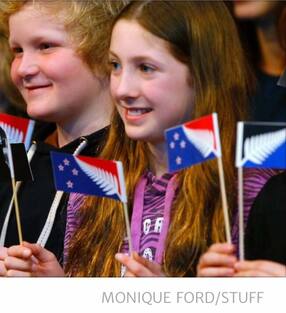 What does it mean to be a Kiwi? The Pākehā settler story seems foundational. But the evolution of our national identity has a more complex history, as JOHN McCRONE recounts. https://i.stuff.co.nz/the-press/news/99074312/feeling-kiwi-a-brief-history-of-the-development-of-the-nz-identity Fans turned out in droves, from all over the country, to welcome the victorious Team NZ. From kids taking days off school, to young women armed with marriage proposals, to those who remembered previous parades. Here are their stories. Holly Linstead, 7, Barbara Davies, Lucy Rankin, 4, and Kim Davies. Photo / Grant Chapman Kim Davies from Mt Eden in Auckland travelled to support Team New Zealand at Valencia in 2007. She brought her daughters Holly Linstead, 7, and Lucy Rankin, 4, to the parade to carry on that tradition. Her mother, Barbara Davies from Takapuna on the North Shore was also there. The family got up early to watch every race. "I like Peter Burling but remember seeing boat builders working through the night so really admire them too," Kim Davies said. Eliezer Peehikuru, 9, and Micah Peehikuru, 12, waving a special edition of Kyle Lockwood's Silver Fern Flag during the parade. Photo / Jason Oxenham Eliezer, 9, and Micah, 12, were on Queen Street early for the parade. Their parents, Maika and Melissa Peehikuru, also brought along baby Eliana, who turns 1 next month. "It's a once in a lifetime opportunity," their dad said. "We came mostly for the kids to see the cup and just be part of history..." 1995 and 2017 flags. Photo / Grant Chapman Fans waiting for the arrival of Team NZ to Market Square. Photo / Dean Purcell Team New Zealand holding onto the silverware. Photo / Jason Oxenham
Team NZ helmsmen Pete Burling says the screaming crowds were "unreal" to come home to. "It's been a whole heap of hard work for our team and it feels pretty special to bring it home." His parents Heather and Richard Burling were at the Viaduct to cheer on their son. "It's unbelievable what they've done, what the team's done," Richard told Tony Veitch. Peter Burling and his Emirates Team New Zealand paraded along Auckland's Queen St with the Auld Mug before taking to the harbour. It is the first time since 1995 that the America's Cup has landed on New Zealand shores and fans were keen to welcome the cup home. The crowd's excitement was palpable as the athletes and trophy sailed past, with screams and cheers. Other boaties showed their support, waving New Zealand and Silver Fern flags from the decks of their yachts. Team New Zealand boss Grant Dalton earlier confirmed to the crowd they'll be heading to Wellington on Tuesday, Christchurch on Wednesday and Dunedin on Thursday. And it doesn't stop there. He said they will make sure, in conjunction with their sponsors, they'll tour the cup to the provincial centres, saying "the heartland of New Zealand where the real people live. Dates for the heartland tour are still be be confirmed. "Some of us are old enough to remember 1995 and how amazing that was, Dalton said. 6 Jul, 2017 3:31pm New Zealand Herald Silver Fern Flag designer Kyle Lockwood appeared on Channel Three's 'The Project' tonight discussing the bid to purchase the 150 year-old Dunedin Cadbury Factory, like many Kiwis he made a small pledge to try and help keep it open. Watch the video for more. Lift-off at 4.20pm today was the first orbital-class rocket launched from a private launch site in the world. New Zealand has become the 11th country with potential to launch cargo into space, joining superpowers and tech heavyweights. The Government has hailed the lift-off as major milestone for the country's space industry. The rocket took three minutes to reach space - outer space starts at 100km above the earth's surface - with a "great" first stage burn, stage separation, second stage ignition and fairing separation. "We're one of a few companies to ever develop a rocket from scratch and we did it in under four years. To get as far as we did on the first test flight doesn't often happen," he said. "It was a beautiful mission to watch." He gave the flight a "10 our of 10" and a big party was planned tonight at the company's operations base near Auckland Airport. During the next few weeks, Rocket Lab's engineers in Los Angeles and Auckland will work through the 25,000 data channels that were collected during the flight and results will be used to improve the vehicle's performance for two further tests. Beck said the company had done more ground testing than was usually done and it had paid off with yesterday's flight. The 17m tall rocket - with a silver fern on its nose - lifted slowly from the launch pad before accelerating and was packing an estimated one million horsepower. Forty-year-old Beck is a hands-on engineer, he was raised in Invercargill and founded Rocket Lab in 2006. The Electron is made entirely of carbon-composite material and is designed to carry payloads of 225kg to an elliptical orbit and up to 150kg to a nominal 500km Sun-synchronous, low Earth orbit. Economic Development Minister Simon Bridges has hailed the launch as the first visible sign of a space industry in New Zealand. Rocket Lab and all New Zealanders could be proud of it, he said. "New Zealand is now one of 11 countries able to launch satellites into space from their own territory and the first to launch from a fully private orbital launch range."  Kyle Lockwood, the designer of New Zealand's alternative flag, designed the silver fern which adorned the first prototype Electron rocket and Rocket Lab's official 'It's a Test' mission patch. CEO Peter Beck approached Kyle in 2014 for a licence to use his silver fern design. We congratulate Rocket Lab on the successful launch of the Electron Rocket, and we are proud that our silver fern design played a part in the test launch today. Grant Bradley - NZ Herald | silverfernflag.org PROUD KIWI - Rocket Lab CEO Peter Beck stands next to the prototype Electron rocket.
|
MEDIAArchives
December 2022
Categories
All
|


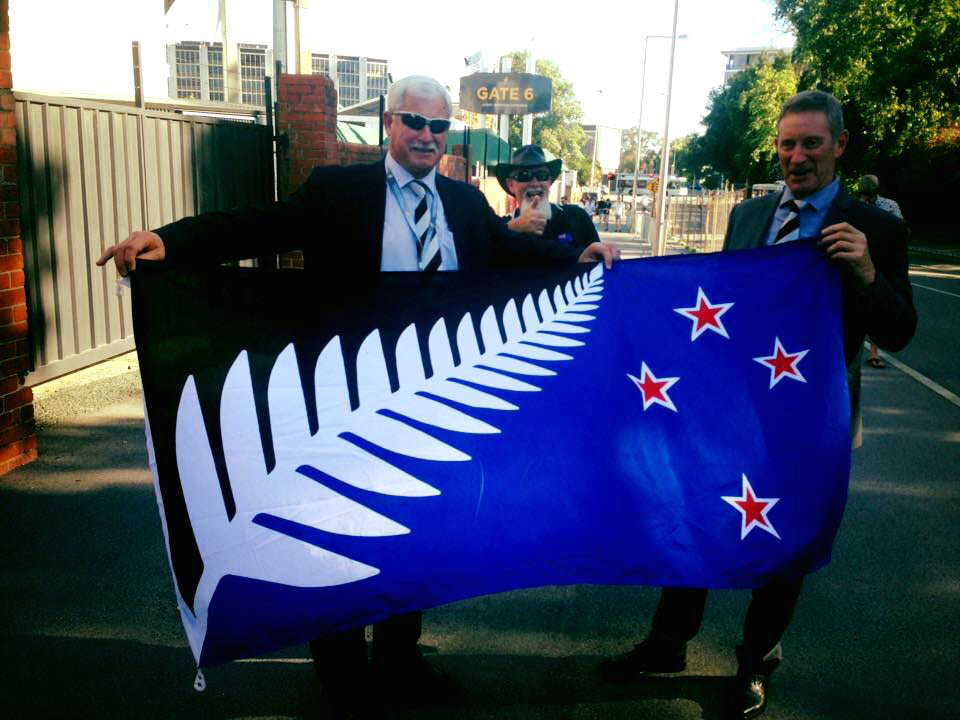





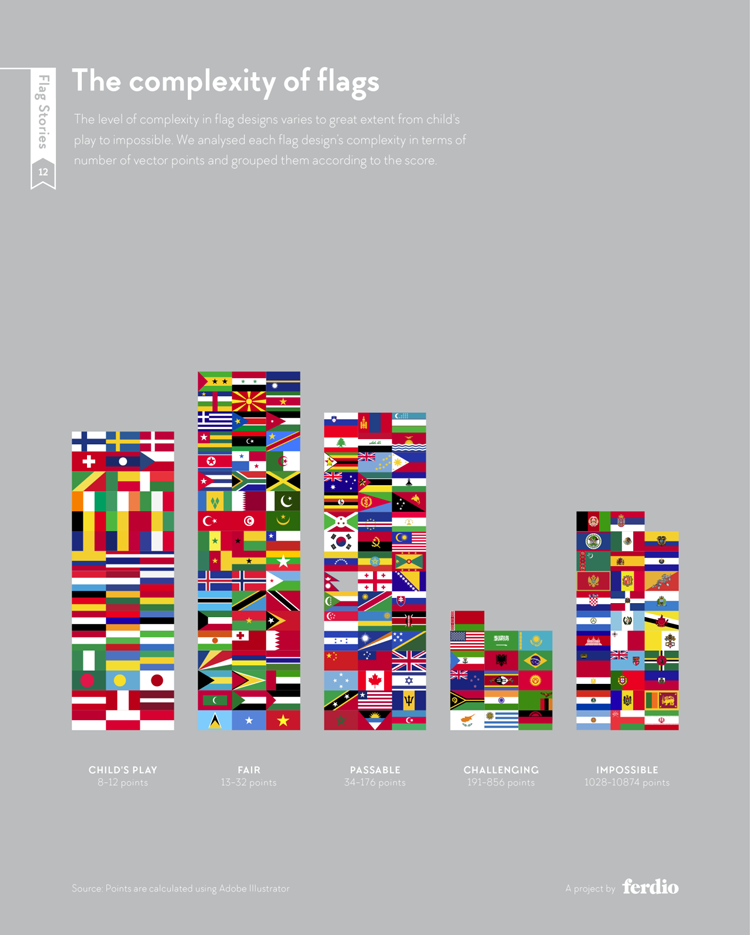
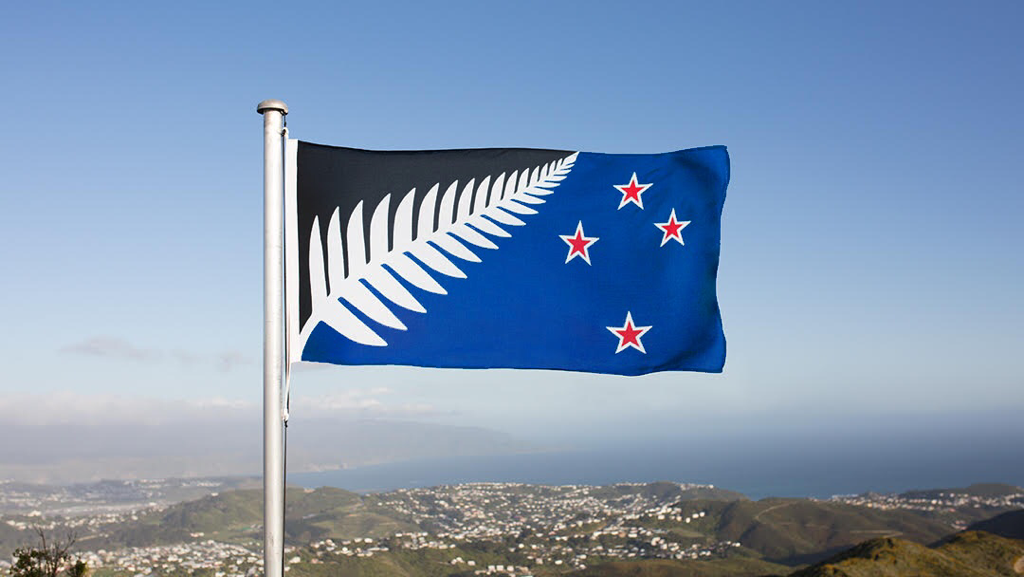





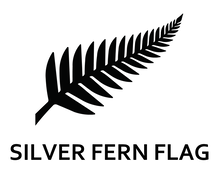
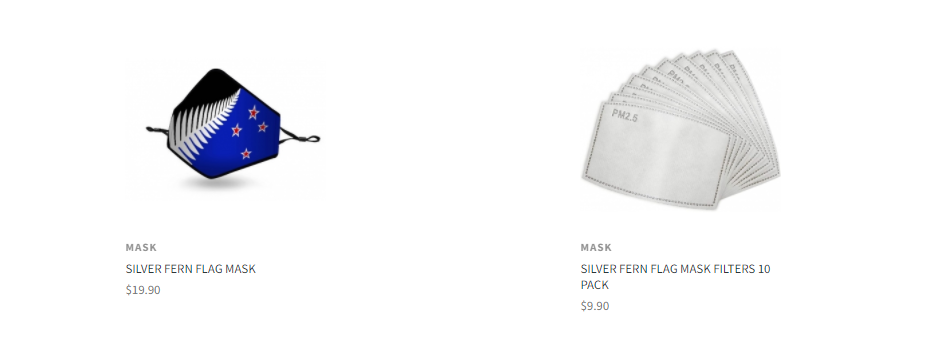
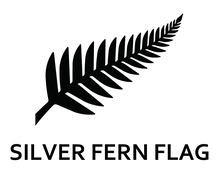

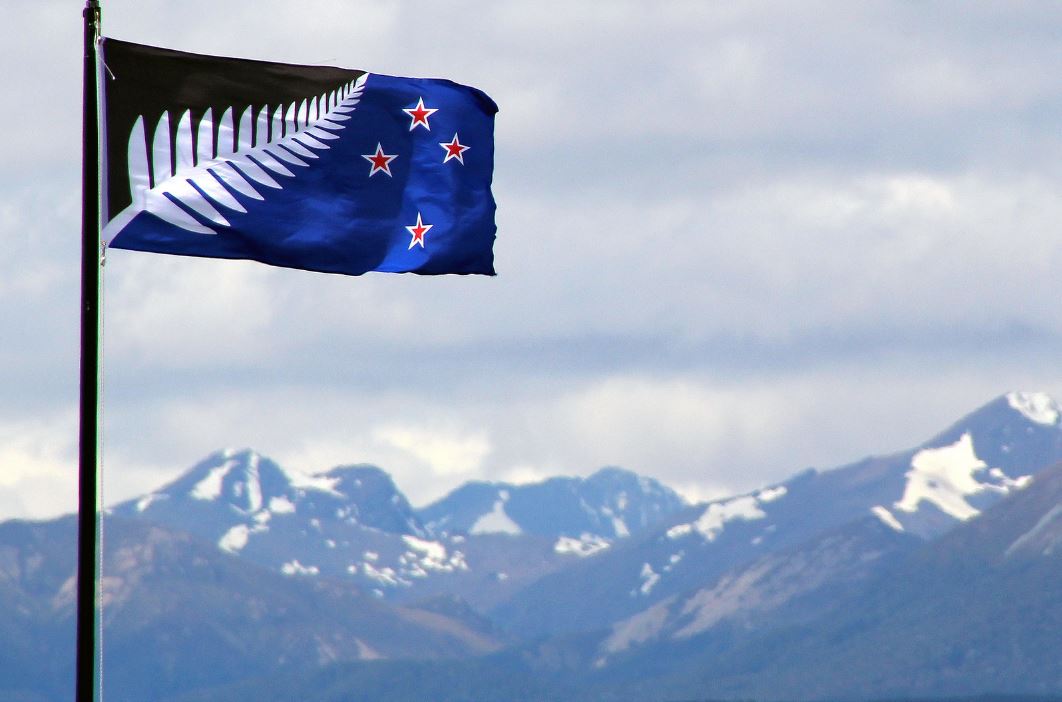




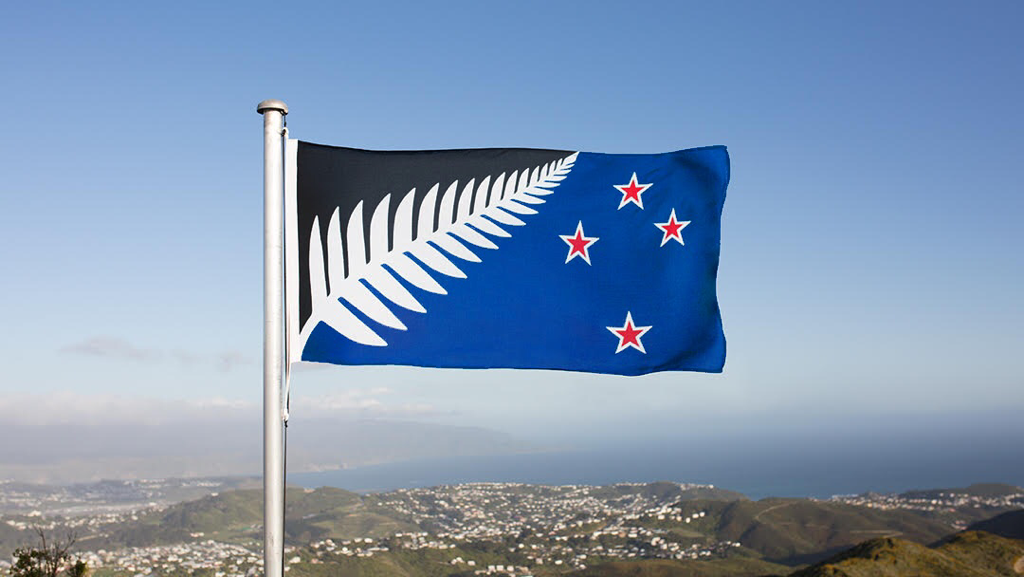

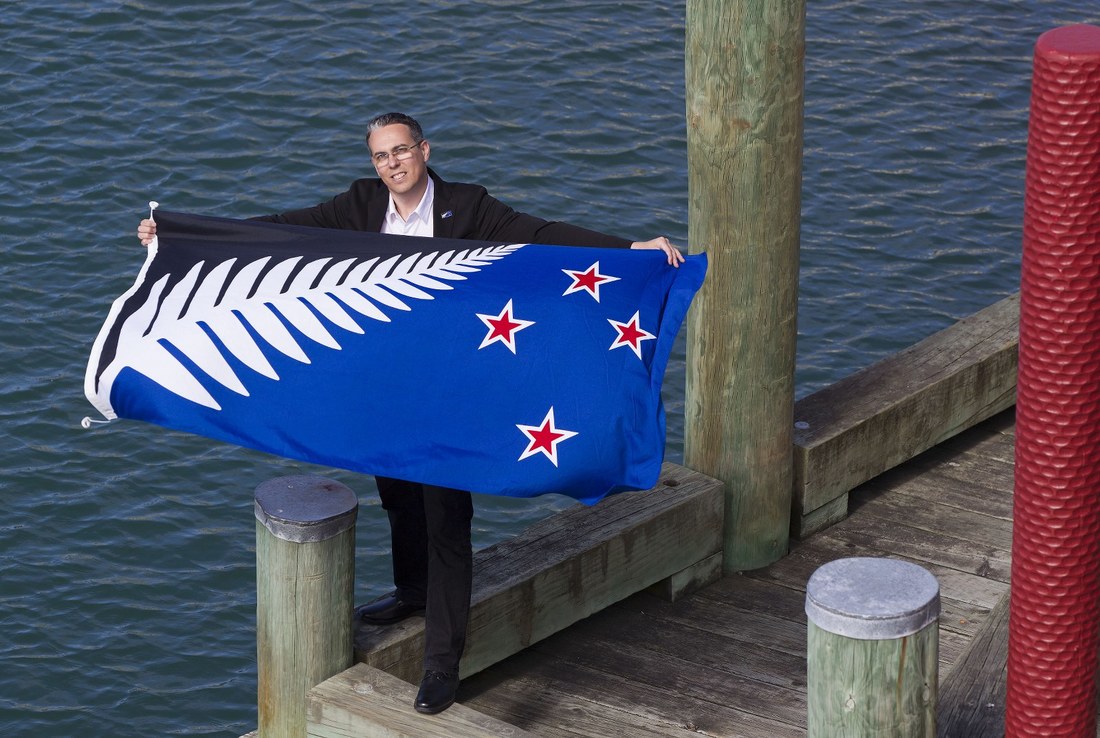


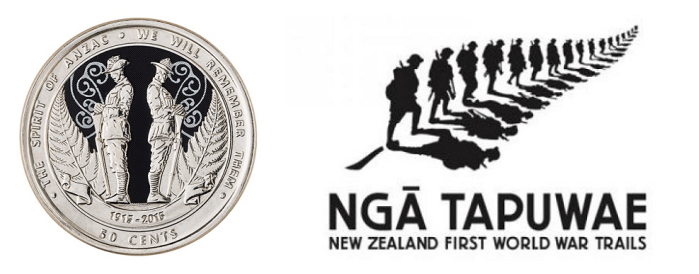



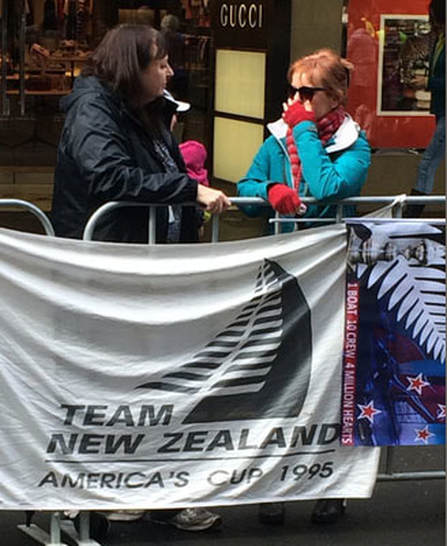

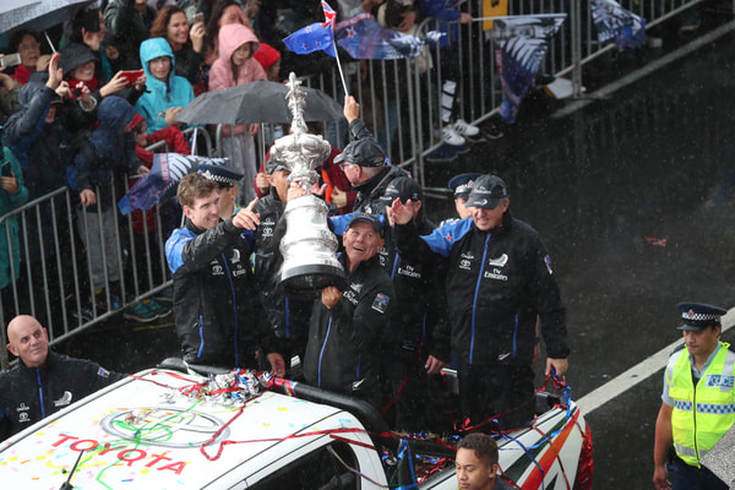


 RSS Feed
RSS Feed
